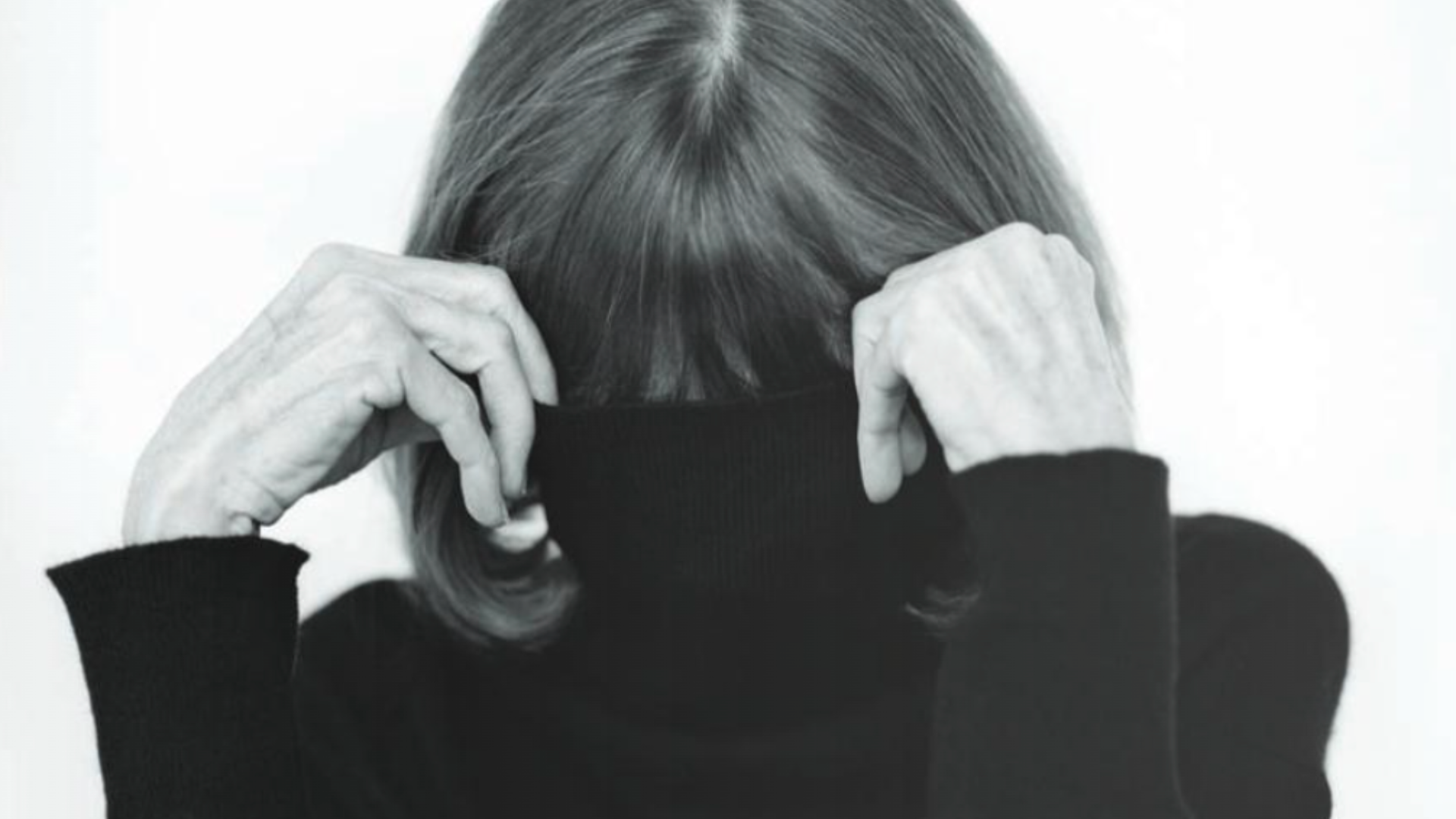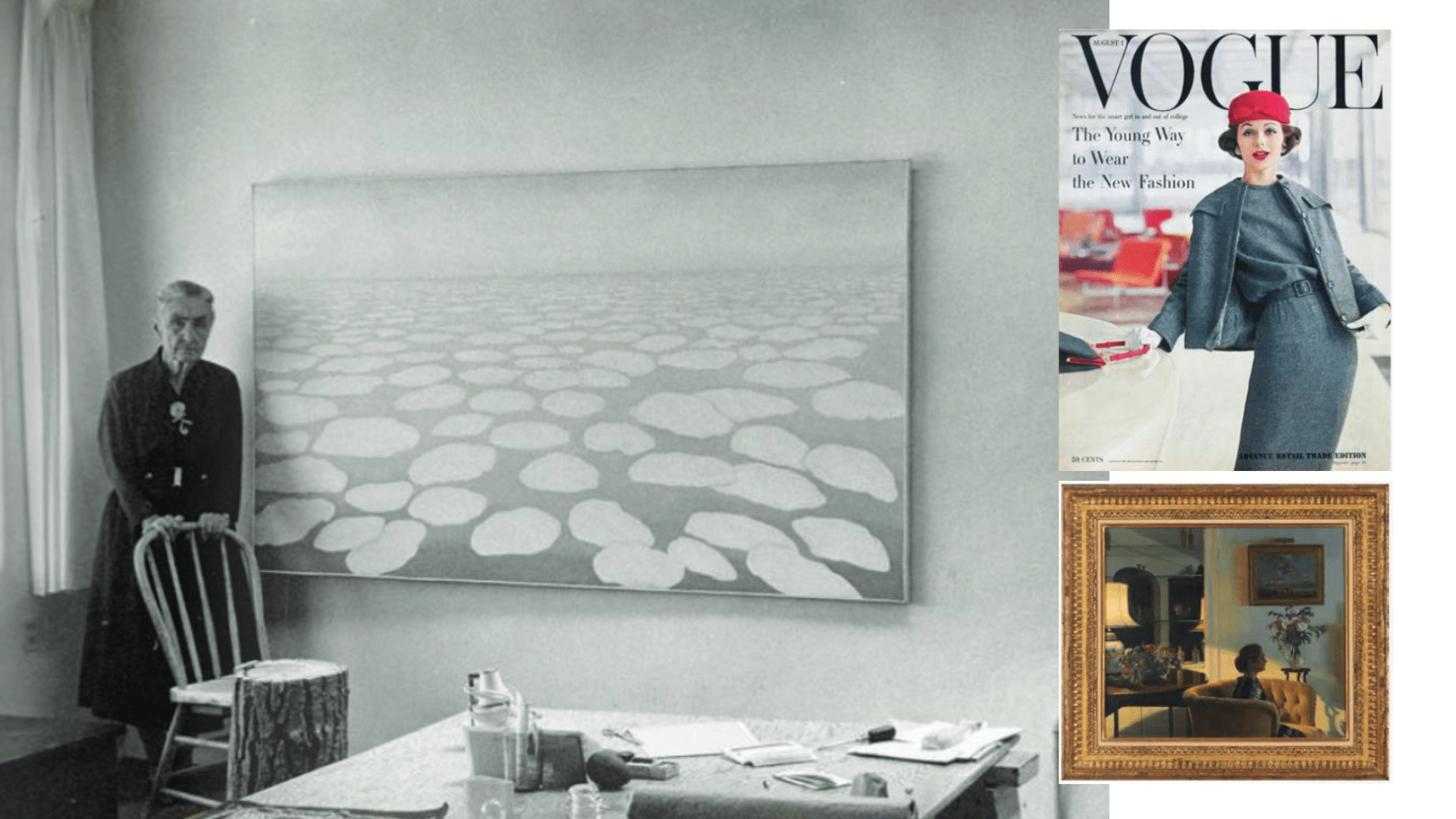By: SEBASTIAN PHILLIPS

A PAMM exhibition presents the life and work of writer Joan Didion as an art retrospective.
Anyone who’s read the prose of the late Joan Didion can attest to her literary force. The woman behind the words was equally as formidable and influential, a fact that’s the focus of Joan Didion: What She Means, an exhibition (running through January 7, 2024) at the Pérez Art Museum Miami. The show explores the life of this renowned author through the lens of art.
Organized by fellow writer and Pulitzer Prize winner Hilton Als, What She Means is a biography of Didion “penned” by 50 artists in their own unique languages. As such, the exhibition pairs the conceptual and the archival with works by the likes of Betye Saar, John Koch, and Pat Steir, alongside memorabilia about Didion and her work. The exhibition is laid out chronologically in sections dedicated to the various places Didion called home throughout her life. Holy Water tackles the writer’s early life in Sacramento and Berkeley from 1934 to 1956, the cities where she was born and attended college, respectively. Goodbye to All That focuses on Didion’s time in New York (1956 to 1963), where she worked her way up from copywriter to feature editor at Vogue and where she wrote her first novel, Run River.
The White Album covers her years (1964 to 1988) in California. Those two-plus decades saw Didion adopt a daughter with husband John Gregory Dunne (whom she married in 1964) and release her first nonfiction book, Slouching Towards Bethlehem, a work detailing her experiences with the hippie counterculture. The final chapter, Sentimental Journeys, chronicles what was Didion’s hardest albeit most productive period. In the stretch between 1988 to 2021, Didion wrote what many considered to be her masterpiece, The Year of Magical Thinking, a visceral memoir about the death of her husband and the sudden illness of her daughter as well as several other nonfiction books, her first theater play, a screenplay on the Watergate scandal, and a collection of essays. And there was that modeling gig, even if by happenstance, when Céline opted to use a Juergen Teller photograph of her as part of the brand’s 2015 spring-summer campaign. However, posing wasn’t new for the author, as Gap featured her in a 1989 as its muse.
Pairing vernacular clearly connected to Didion with irrelevant artworks is a way to contextualize the writer’s life and work in what Als calls “an exhibition as a portrait.” This run of What She Has in Miami, after its much-lauded premiere in Los Angeles’ Hammer Museum in late 2022, is not coincidental. Didion visited and reported on the city often. In 1987, she committed those experiences to print in Miami, an examination of the town and the influence of its exiled Cuban community.
“Didion had deep ties to Miami, as well as cultures in and around the area,” says Als. “She was a Californian by birth and temperament but traveled widely throughout America. She was widely interested and committed to recording what made us different and similar in a shared nation.”

